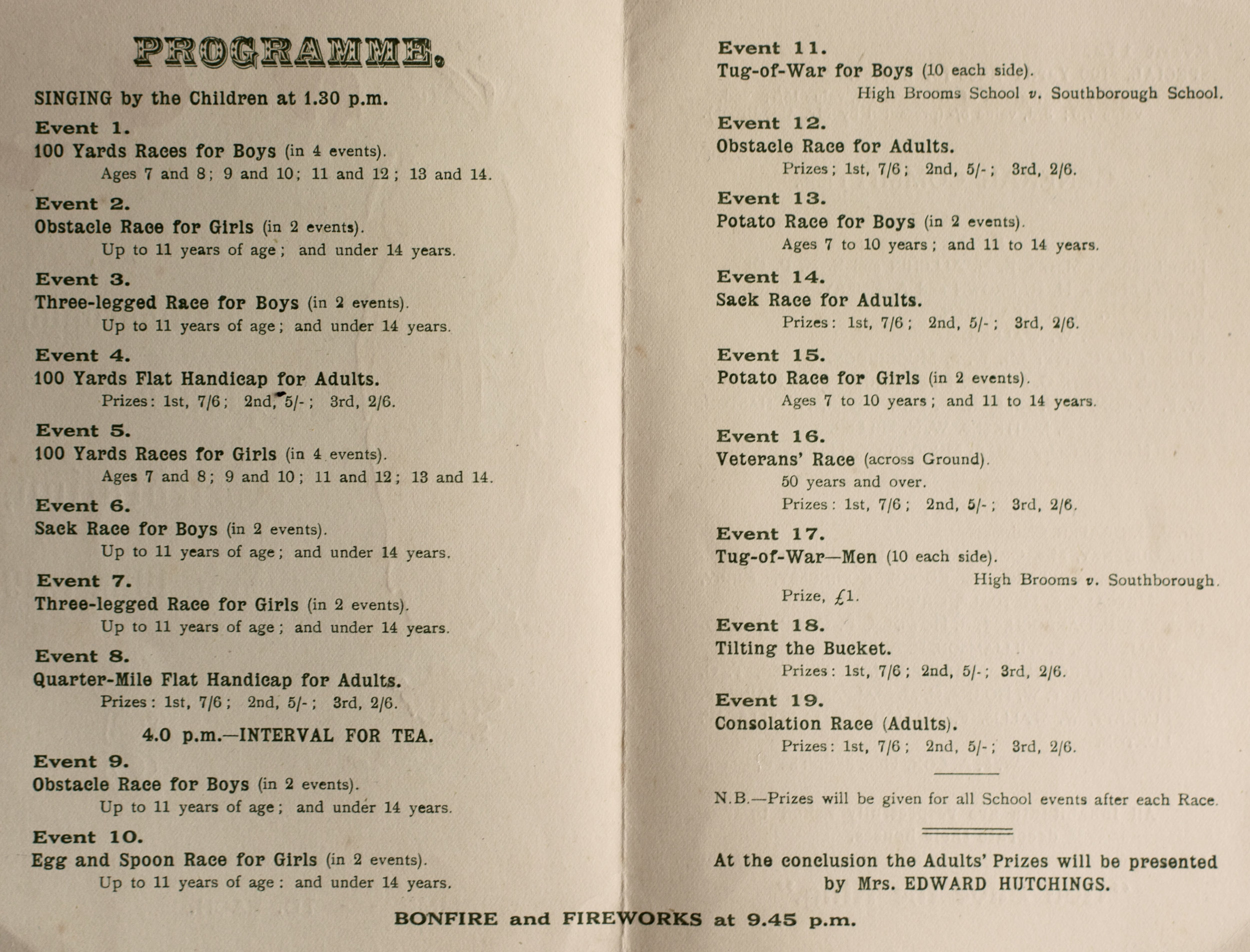By Heather Evernden
One of the pleasures for local historians is the unexpected arrival of archive material from people, often strangers, who have cherished family mementoes with links to Southborough. Recently the Society was contacted by Wendy Wallis, now resident in Rugby. Wendy asked if we would like to see the collection of items she had in safekeeping, commemorating the Wallis family.
The archive included the school exercise book of Horace Wallis from 1841 and two of his son William’s books, dated 1866 and 1868. The men were Southborough residents, father and son, born in the nineteenth century, and both educated at what was referred to at the time as “Southborough Free School”. Intriguingly the school address is given as “Southborough, Tonbridge, Kent”.
Horace’s exercise book was used for arithmetic problems. The problems seem to focus on skills useful for book-keeping: Percentages, Profit and Loss, Discounts and Duodecimals. “What is the interest of £257.5s. 1d at 4 per cent per annum for one year and three quarters?” This was a problem Horace tackled which made my head spin, especially as he would not have had access to a calculator. But his working out is calm and measured, beautifully written in ink, now faded to brown, and coming to the correct answer every time.
William Wallis was as skilful with his pen as his father. His copy books are meticulous, recording line after line of handwriting practice. The choice of aphorisms to be lettered is very sobering: “A sinful life is offensive to God;” “Want ever attends sloth”; “No moment is to be lost”; “Kings must all soon die”; “Command you may your mind from play”. Let’s hope William and his peers were not too subdued by these weighty thoughts.
William also had to study practical arithmetic, as his father had done. There are examples in his books of sums calculating weights and measures and also of the wording and layout of model receipts, such as a tradesman might issue. There is also a more playful element to William’s schoolbooks. Page after page is covered with elaborate and beautiful lettering. He experimented with different fonts and styles; some letters are decorated, some shaded or filled with cross- hatching.
Aged 12, William completed what looks like a test piece or maybe a competition entry. He used a sheet of card, about A2 in size, and drew an elaborate pattern of lettering on it, demonstrating a wide variety of different formats. The text reads “Happy is the Youth that findeth Wisdom and the Youth that getteth Understanding”. This impressive piece of work is countersigned by William’s teacher: “July 3rd 1866. W. Spilsbury, Master of Southboro (sic) Free School”.
Lettering ‘sampler’ by William Wallis, aged 12 years, dated the 3rd of July, 1866.
Detail from bottom left hand side.
It was no surprise to read in his obituary that William Wallis grew up to work in a creative trade. He was a builder working with Gallards, who clearly had a talent for design. In addition, he was a chorister and then organist at St.Thomas’ Church. He had been linked with the church since its dedication in 1860. I had already been delighted to find that this talented man had lived in Vale Road, very close to my own home. I was even more delighted to discover that William Wallis had carved the oak choir stalls in St. Thomas’ Church, when they were installed by Gallards, the builders. Sunday, by Sunday I sing from those Choir Stalls, my music resting on the shelf William shaped and carved!
William Wallis out the front of Gallards, presumably in 1912 when the Almshouses was opened to its first occupants. Wallis is the gentleman with the white beard just right of centre.
Civic minded: William was also the Hon. Secretary of the Southborough War Savings Committee during World War 1.
William Wallis’ obituary, 1934.
We would like to thank Wendy Wallis and her family for loaning these fascinating items to the Society and contributing to our understanding of Southborough’s history.






































